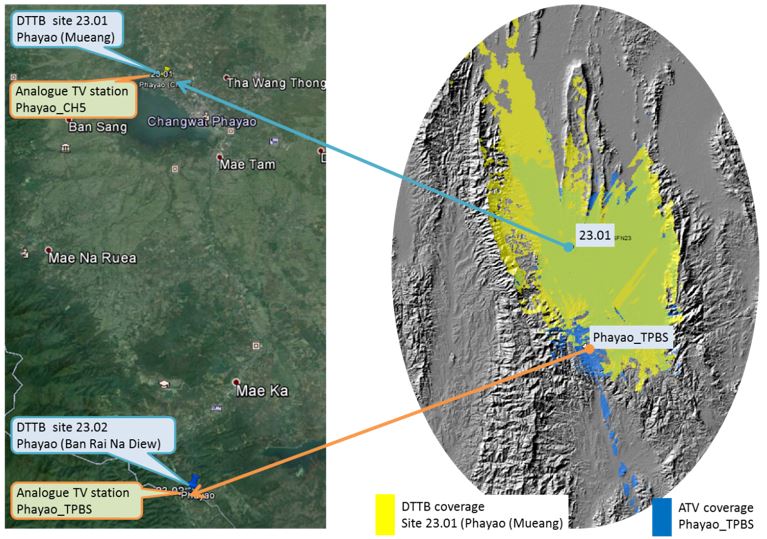The DVB-T2 frequency and network planning for achieving 95% rooftop coverage in Thailand was carried out in two main stages; Stage 1 covered the planning of the 39 main sites and Stage 2 covered the planning of the 132 additional sites to reach the 95%. The associated project approach is illustrated below:
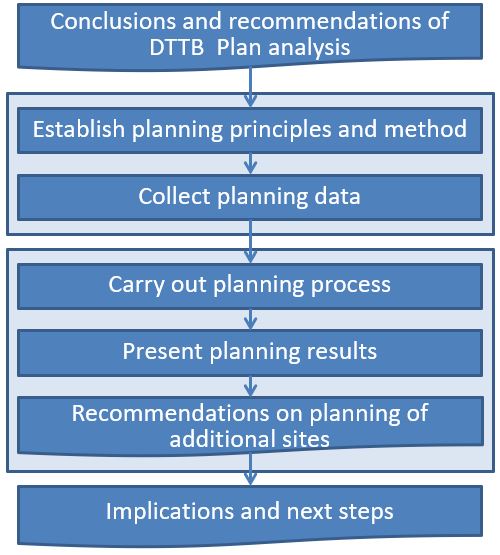
Establishing the planning principles and method are a key step in any frequency planning project. The following two figures give an impression of the aspects involved in agreeing these principles and methods:
Principles:
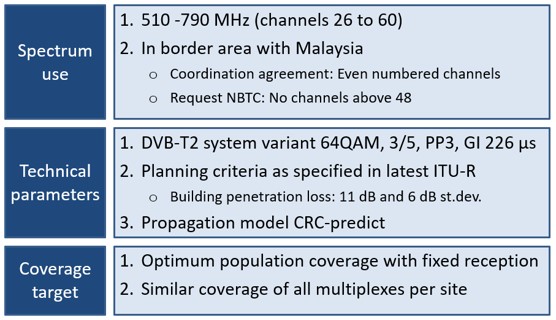
Method:
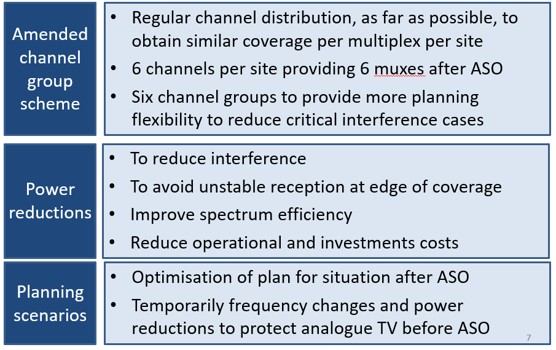
After collecting and loading the necessary planning data (such as the site characteristics, terrain and clutter data), the planning results are produced and analysed in detail, together with the client. For example, this can include the interference analysis of Single Frequency Networks (i.e. internal SFN and interference of the SFN by other sites), as illustrated below:
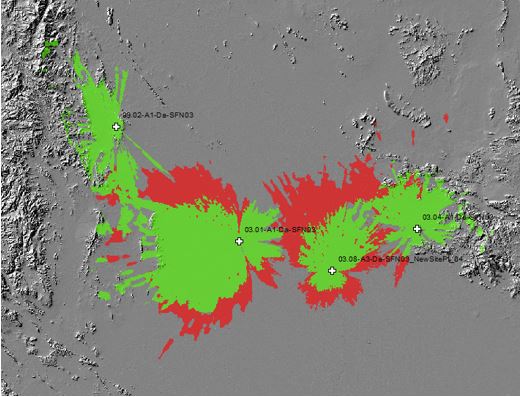
In developing the frequency planning, often the deployment schedule of the DVB-T2 sites should be considered, as well as the switch-off of analogue sites (ASO schedule). These schedules impact the interference levels between the sites, including not only the digital but also analogue sites. In addition, the coverage of the digital sites should be compared with the coverage of the analogues sites as to ensure a proper simulcasting of services. The figure below shows such a simulcast analysis:
